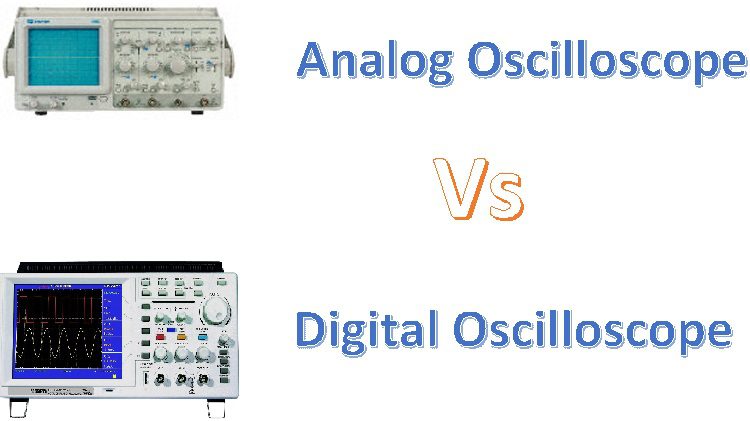Now here we are going to know the differences between cathode ray oscilloscope(cro) and digital storage oscilloscope(dso). We know that cathode ray oscilloscope(CRO) is an analog oscilloscope. Now we will compare CRO and DSO. As this is a digital world digital storage oscilloscope has more advantages over analog oscilloscope.
Difference between Cathode Ray Oscilloscope(CRO) & Digital Storage Oscilloscope(DSO):
The following points will make you understand the basic difference between cathode ray oscilloscope and digital storage oscilloscope.
- The advantage of the analog storage oscilloscope(cro) is that it has a higher bandwidth and writing speed than a digital storage oscilloscope, being capable of operating speeds of about 15 GHz.
- The digital storage oscilloscope is primarily limited in speed by the digitising capability of the analog to digital converter. Aliasing effects also limit the useful storage bandwidth (USB) of the oscilloscope to a value given by the ratio.
- The value of constant C is dependent on the interpolation method used between the dots. For a dot display C should be about 25, to give an eligible display: for straight line interpolation it should be about 10, and for sinusoidal interpolation, C should be about 2.5.
- The digital storage oscilloscope has a CRT which is much cheaper than an analog storage oscilloscope, making replacement, more economical. The digital storage oscilloscope is also capable of an infinite storage time, using its digital memory.
This textbook “Electrical and Electronics Measurements by S. Chand” is the best in industry. Grab it now for very less price.
- Furthermore, it can operate with a constant CRT refresh time, so giving a bright image even at very fast signal speeds. The digital storage oscilloscope is not, however, capable of functioning in a variable persistence storage mode.
- The time base in a digital storage oscilloscope is generated by a crystal clock so that it is more accurate and stable than a CRO, where the time base is generated by a ramp circuit.
- The analog to digital converter used in a digital storage oscilloscope also gives it a higher resolution than an analog oscilloscope(cro). For example, a twelve bit digitizer can resolve one part in 4096. A conventional analog oscilloscope typically resolves to about 1 mm on the screen, that is to about one part in 50, equivalent to 6 bit resolution.
- Digital storage oscilloscopes are also capable of operating in a look back mode, as described for waveform recorders. An analog oscilloscope(CRO) collects data after it has been triggered.
- A digital storage oscilloscope(DSO) is always collecting data, and the trigger tells it when to stop. The oscilloscope can stop immediately on the trigger, so that all the stored information is pretrigger, or it can stop sometime after it has received the trigger. If the delay is longer than the storage capacity of the oscilloscope, then all the storage capability of the oscilloscope, then all the stored information is posted trigger, as for an analog oscilloscope.
- The digital storage oscilloscope is also able to operate in a babysitting mode. When the scope is triggered it prints out the stored results onto a hard copy recorder (or disc storage) and then re-arms itself ready for another reading.
Conclusion:
Now here we have discussed the Comparison between Analog and Digital Storage Oscilloscopes. Soon I will be writing an article on Digital Storage Oscilloscope(DSO) functions, applications and its advantages.You can download this article as pdf, ppt. I think you understood the difference between CRO & DSO.
Comment below for any Queries.
